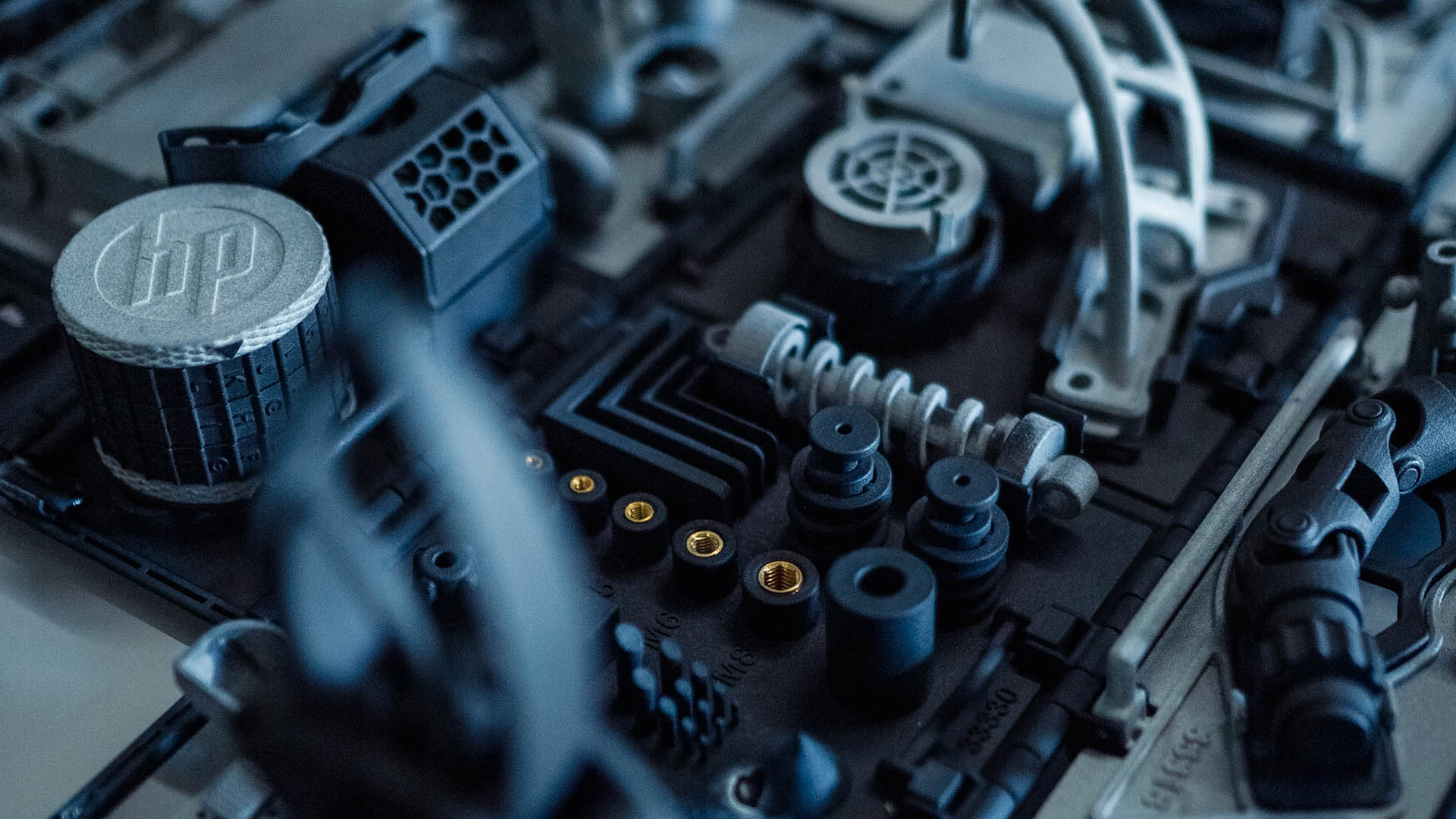Problem
Automotive OEMs and Tier 1s are constantly keeping pressure on suppliers to increase efficiency and deliver more value. Working in the realm of Body-In-White (BIW) and closure assembly, Gonzalez Production Systems of Pontiac, Michigan saw opportunities for additive manufacturing in assembly tooling.
Automated production lines typically have many dozens of fixtures, each often consisting of many hundreds of parts. The shapes of parts that are unique to each OEM’s vehicle model as well as their assembly and fastening constraints drives a high number of custom, low-volume parts within their associated assembly fixtures and handling tools. That combination of high customization and low volume is well-suited to additive manufacturing.
A key hurtle in this exercise was squaring the relatively high feedstock cost of various additive manufacturing processes with the low material cost of the metals used in conventional fabrication processes. Since the majority of components in Gonzalez tooling applications are made from low-cost aluminum or steel bar and plate, their path to savings rested on parts that had cost dominated by manufacturing costs.
Solution
To achieve cost savings with a material cost penalty, Gonzalez needed to choose a process that offered the best machine cost to print speed ratio balanced with good strength properties. The company also need to design with some new techniques to use that material as efficiently as possible. While they typically work with metals, metal additive manufacturing was cost prohibitive with most of their applications due to its slow print speeds and high printer cost. With cost and material properties as their filter, they Identified HP’s Multi-Jet Fusion (MJF) process and PA12 material as the best value for their application.
Implementation
Even with a cost-efficient additive manufacturing process like MJF, Gonzalez still needed to overcome significantly higher material costs that were paired with significantly lower strength and stiffness of PA12 compared to steel. Here, they needed to lean on some design techniques that were new to their company to drive efficiency. They leaned on ANSYS Discovery for topology optimization that helped minimize material usage with specific performance goals. This allowed them to exploit an inefficiency inherent to their conventional parts.
Current conventionally manufactured assembly tooling components are typically designed to minimize machining setups and labor costs. Further, there’s the light weight of automotive body components, individual components often have kilogram masses in the single digits. Tooling parts end up significantly overdesigned, even with their rectangular shapes and sharp transitions that concentrate stress. This approach makes sense with the Gonzalez conventional fabrication methods. If steel is $1/kg and they have small, unique, low volume parts, it’s difficult to justify engineering hours to minimize material usage.
With additive manufacturing, optimization for performance is significantly more valuable. Engineering polymer powders are often 50 or more times the cost of steel, and polymer filaments can be hundreds of times more expensive than steel. Steel is also greater than 5 times the strength and greater than 100 times the stiffness of PA12. To achieve similar strength performance in PA12, Gonzalez need to remove the stress concentrations present in the conventional design. To perform on the stiffness front, they need some part consolidation and more efficient load paths down to the base in the part.
They started with a sort of “blob” cad model representing the space available for the part. After applying the proper boundary conditions and performance goals for the analysis, ANSYS Discovery iteratively reduced the volume of the blob.
Outcome
With some part consolidation and topology optimization, Gonzalez was able to achieve an 87% reduction in mass versus the steel baseline design. Additionally, the stress safety factor under load was raised 2.5X even with PA12’s lower properties versus steel. The shape optimization in ANSYS Discovery yielded a design that was much smoother in shape and lacking the sharp transitions that concentrate stress. Most importantly, this performance and light-weighting exercise came in more than 20% cheaper than the baseline design. And, of course, the lead time for these parts is measured in days rather than weeks.
The design effort was definitely a learning process that forced the company to recognize and break old habits. The tendency to design features to nominal, even number dimensions, stick to plate and bar stock sizes, rectangular hole patterns, etc., all had to be challenged at times. While those instincts served well in keeping 3-axis machining costs in check, they aren’t drivers in the MJF process. Gonzalez had to drive for things like mass reduction, volumetric compactness and remember that the shape complexity they arrived at didn’t come with a penalty in cost.

